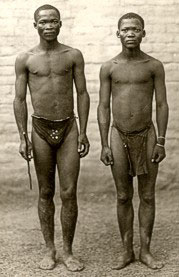Physical Anthropology
Museums and universities around the world often keep human remains from archaeological sites – and face issues concerning their respectful treatment in relation to changing attitudes.
But there are sometimes remains with a rather different history, obtained – often in the name of science – by the robbing of graves of recently dead individuals. Trafficking in so-called Bushman “relics” has emerged as part of the colonial legacy of museums in South Africa and Europe.
As archaeologists and museologists at the McGregor Museum we condemn these practices unconditionally.
Some of the atrocities are revealed in the paper by Martin Legassick and Ciraj Rassool, which the South African Museum (Cape Town) and the McGregor Museum (Kimberley) have now jointly published. This important work will help museums to redress the wrongs of the past.
Reverence for the dead, past and present, makes human remains the most sensitive of materials that archaeologists are likely to uncover. Skeletons and grave goods are today treated with the utmost dignity and, where possible, living descendants are brought into negotiated partnerships in the management of sensitive material. Graves are not disturbed unless for very good reason.

Museums and archaeologists, on the one hand, and communities, on the other, can establish common ground with regard to sensitive materials. Mutual interests in preserving and protecting the evidence of the past, and in re-writing our histories, can be recognised. Museums and communities can form partnerships for keeping human remains safely and with dignity.
Recent projects to salvage human remains accidentally disturbed during development work are described here: Gladstone Cemetery Consultative Forum
Suggested Reading
- Legassick, M. & Rassool, C. 2000. Skeletons in the cupboard: South African museums and the trade in human remains, 1907-1917. Cape Town & Kimberley: S.A. Museum and McGregor Museum.
- Morris, A. 1992. The skeletons of contact: a study of protohistoric burials from the lower Orange River Valley, South Africa. Johannesburg: University of the Witwatersrand Press.
